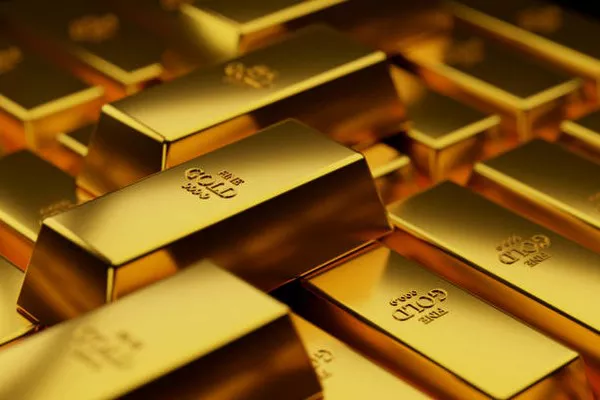In a month marked by heightened geopolitical tensions and a focus on the upcoming U.S. central bank policy meeting, gold prices exhibited both volatility and strength. As of Tuesday, the precious metal was set to record its best monthly performance since March, driven by safe-haven demand triggered by the Israel-Hamas conflict.
Spot gold experienced a 0.8% decline, reaching $1,980.71 per ounce by 2:30 p.m. ET (1830 GMT), following a peak at $2,007.59 earlier in the session. Simultaneously, U.S. gold futures settled down 0.6% at $1,994.30.
The pullback in prices can be attributed to a combination of psychological resistance around the $2,000 mark and some profit-taking in anticipation of key economic reports, according to David Meger, Director of Metals Trading at High Ridge Futures. Nevertheless, Meger underlines, “we still have a positive bias in gold with the continuation of safe-haven demand given the Middle East war.”
Gold had seen its lowest point in seven months at $1,809.50 on October 6, just a day before the escalation of the conflict involving Hamas and Israel. It is now on course for a remarkable monthly gain of over 7% as investors sought refuge in the precious metal amid the ongoing crisis.
Aside from the geopolitical factors, market attention is firmly fixed on this week’s U.S. Treasury refunding announcement and the Federal Reserve’s monetary policy decision scheduled for Wednesday. Subsequently, the U.S. monthly jobs report, slated for release on Friday, is another event that market participants are closely monitoring.
According to the CME FedWatch tool, it is widely anticipated that the Federal Reserve will keep interest rates unchanged at this meeting. Meger points out that the job market’s performance will be pivotal, stating, “A stronger jobs market could positively impact yields and negatively impact gold, while a weaker jobs market raises the potential for a dovish Fed and then the pendulum would swing the other direction.”
In a broader context, the World Gold Council noted that global gold demand, excluding over-the-counter trading, decreased by 6% in the third quarter. Central bank buying fell short of last year’s record levels, and consumption by jewelers also declined during this period.
Meanwhile, other precious metals experienced mixed performance: Spot silver saw a 2.4% drop to $22.75 per ounce, while platinum registered a modest gain of 0.13% to reach $930.68, with both set for monthly gains. In contrast, palladium fell by 0.5% to $1,122.60 and was on track for a nearly 10% decline over the course of the month.


